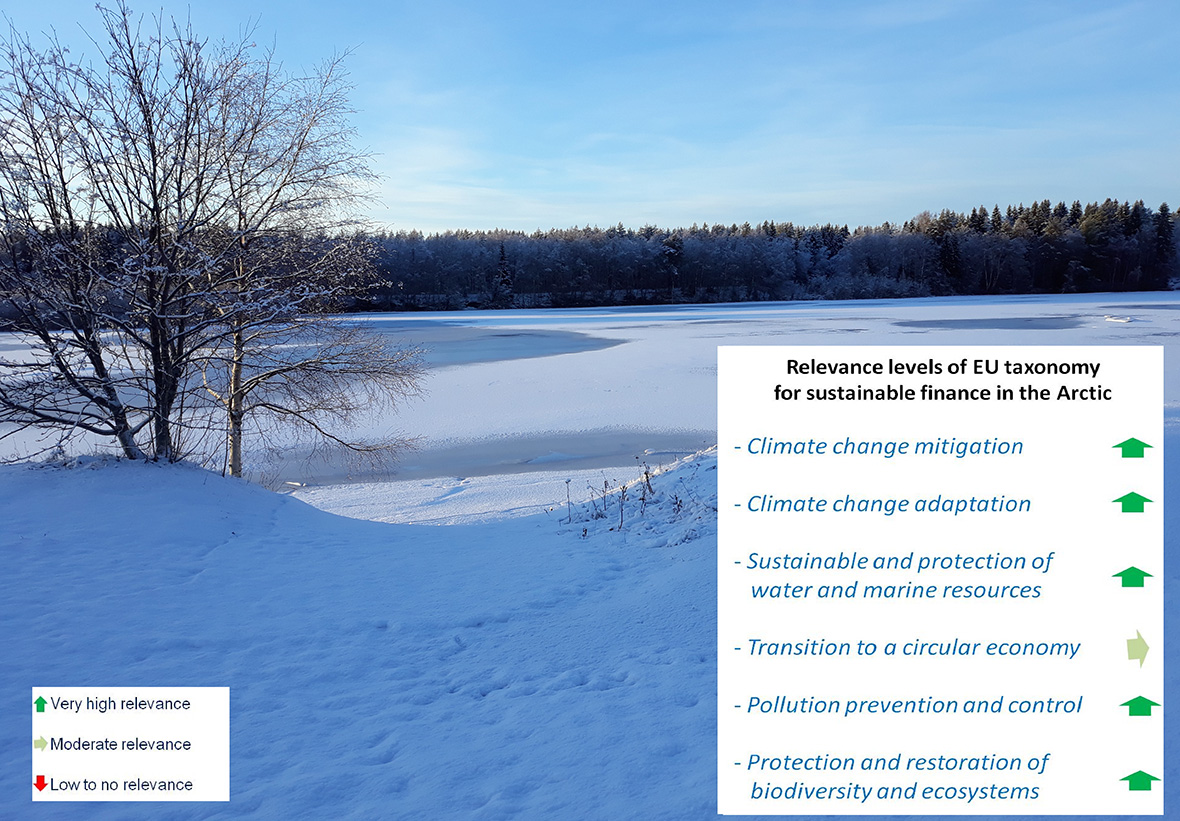There is news from Brussels. The EU Taxonomy for Sustainable Finance finds its way to the desks of decision-makers in the private sector and the investment community all across Europe. NPE researcher Adrian Braun reflects on the latest developments and shares his thoughts what role the Arctic may play in these developments.
After year-long negotiations of the EU commission with the member states, the EU taxonomy for sustainable finance comes finally to a conclusion. Though it addresses the concept of sustainability, it draws particular the line from the economic dimension to the ecological dimension, meaning that social aspects play an inferior role in this taxonomy. The EU commission has defined six overall environmental goals that should find consideration in future business activities. An important rule is by running a business activity, commitment is required to at least one goal and not a single of the other goals could be violated at the same time. But who has to consider the taxonomy, when it expresses especially the notion “sustainable finance”? It embraces amongst others that the investment community has a great opportunity to get a better understanding, which investments are sustainable and which not and what can be declared as “green investments” in the finance discourse.

Picture 1: The chart depicts the six environmental objectives of the EU Taxonomy for Sustainable Finance (EU Commission 2020) with assessments (author´s own) of relevance levels for current and future business activities in the European Arctic. Five out of six objectives are of highest relevance (including climate change adaptation/mitigation & protection of biodiversity) and the circular economy objective is of moderate relevance with rising significance in the years to come.
What does this taxonomy means for the European Arctic? The EU is an observer of the Arctic Council and Finland, Denmark (Greenland), Sweden and Iceland are Arctic countries with EU memberships. Moreover, the European Arctic is neither “abandoned” in terms of population nor in terms of business activities. Investments into new industrial activities find their way to the Arctic continually, both in on- and offshore projects. This underlines already the economic relevance of the taxonomy. So, what about the environmental dimension in the taxonomy?
The EU has defined six overall environmental goals that correspond to international treaties and objectives, with the Paris climate agreement as the most notable one. All six goals are of relevance for the Arctic, with arguably at least five of them up to the highest degrees. The Arctic ecosystems are in its beauty at least to the same extent vulnerable. Moreover, Arctic ecosystems are crucial for the systemic well-being of the global ecosystem in the long-run, for multiple reasons, including the threat of rising sea-levels as result of loss of ice on Arctic land masses. Circular economy is indeed an essential aspect particularly as it could be also a driver to reduce natural resource depletion in the Arctic. However, it is the only goal that is possibly not of highest relevance for the Arctic, because the pursuits towards new circular technologies and solutions are mostly outside the Arctic in large urban areas. The risks for the Arctic by rising pollution and loss of biodiversity have been discussed for decades and it is striking that plenty of scientific studies that outline the significance of these factors did not result to implementation of more sustainable practices and statistical improvements regarding these metrics. Plastic waste in the Arctic Ocean increases enormously every year and many species continue to extinct in the Arctic.
Each and every single aspect mentioned above deserves high attention and dedication. In these few lines just the upcoming question is presented. How will the decision-makers behind business activities in the European Arctic (corporate leaders and investors) take the taxonomy into account in the decision-making processes? In specific cases this might resemble when the next energy power plant is planned, will they look what the EU considers as “green” energy and what are environmentally harmful energy sources? Another example could be the development of urban infrastructure and the construction of conventional houses or alternatively energy and water-efficient buildings. The real impact of the new sustainable finance taxonomy is difficult to foresee and here there are definitely starting points for meaningful future research.
Text and picture:
Adrian Braun
References: